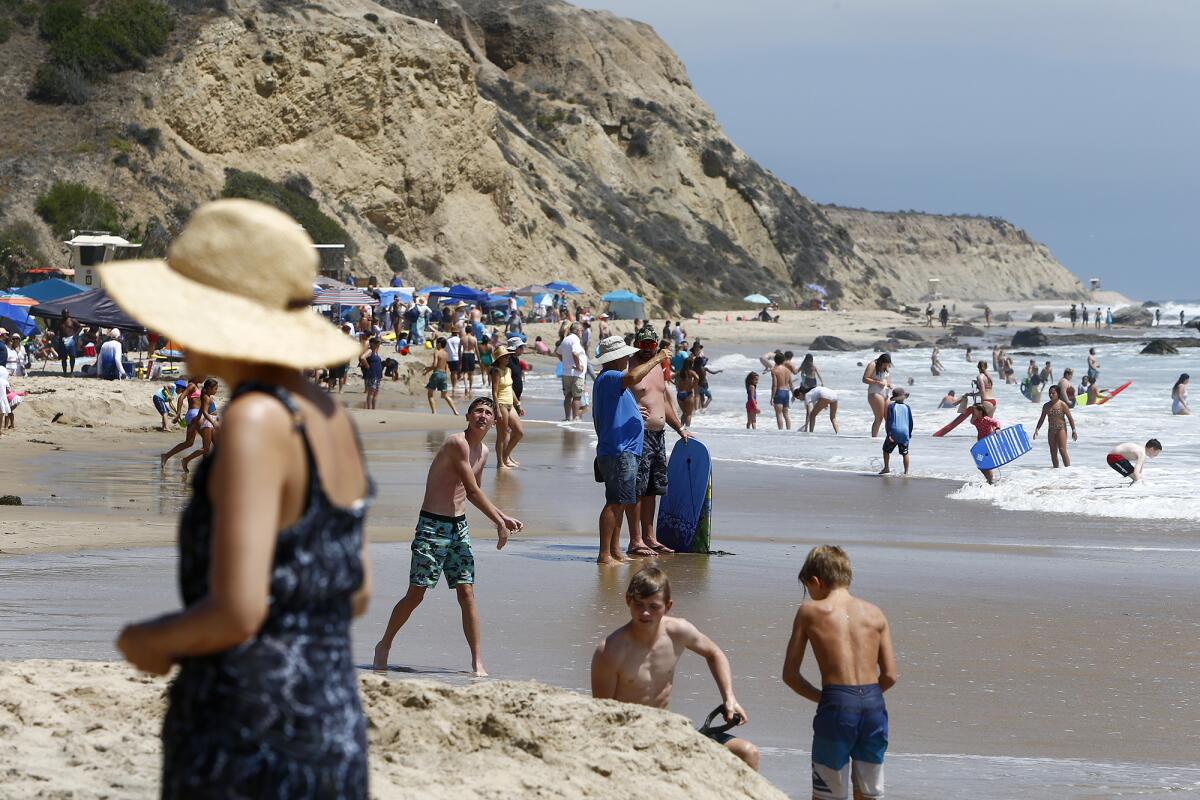Crystal Cove Conservancy reports $9.8 million raised through revenue and donor support in 2022

- Share via
The Crystal Cove Conservancy took in about $9.8 million in revenue in 2022, and nearly all of it was spent on educational programs, which saw over 10,000 students this year, according to the organization’s annual report released in May.
About $5.3 million came in through donor pledges and contributions while rental of the state park’s historic beach cottages generated roughly $1.5 million, and $1.9 million came from concessionaires, which include the Beachcomber and Shake Shack eateries and the park’s store. The rest came from memberships, special events and other investments.
According to the report, the conservancy broke close to even in 2022. Expenditures in the form of programs, administrative and fundraising expenses amounted to around $9.8 million, short by a little over $150.
About 94.8% of the conservancy’s budget goes toward providing educational programs for kids from kindergarten through 12th grade. It also provides an internship for undergraduate and graduate students, part of last year’s expansion of a new initiative meant for Black, Indigenous, people of color and first-generation college students.
Roughly 2.9 million visitors visited the park last year.
Work continues on the restoration of the North Beach cottages. Three have been fully restored while five remain under progress. Nine others remain untouched as of May.
Progress remains at roughly the same level as reported in 2021, when five of the 17 cottages undergoing restoration were in “great shape,” according to officials.
Restoration is done in groups of four to five. According to a recent update, the project remains on track, with the first four groups now considered “substantially” complete. Work is beginning on another five cottages.
“Ultimately, historic restoration is not just about rebuilding a structure, it’s about rebuilding its story,” said Cindy Otto, Crystal Cove Conservancy’s director of donor relations, in a statement released in April regarding the status of the cottages.
“Throughout the restoration process, the conservancy has worked closely with state park historians digging deep into the historic archives and meeting with many of those who lived in the cottages,” Otto said. “The crew has been able to capture the character of each cottage during those summer tent camping heydays, and as each cottage is completed, with its original quirks preserved, one gets a sense of the joy and respite the cottages provided to the families who built them.”
The total cost of restoration is expected to be $55 million, with about $48 million of that secured. Otto said the hope is to receive the remaining $7 million through federal historical tax credits.
“Sometimes, I struggle to describe our work because parks have countless possibilities — countless ways for people to untether,” Crystal Cove Conservancy President and CEO Kate Wheeler said in a statement accompanying the report’s release. “The simple act of freeing yourself from the hustle and bustle of everyday life and allowing yourself to be swept away into a uniquely beautiful landscape. Parks are a fantastic universe in themselves.”
Wheeler acknowledged the stewardship of the Acjachemen and Tongva tribal nations, with which the Conservancy works in partnership.
“For over two decades, we’ve been dedicated to preserving Crystal Cove’s storied past to honor those who came before us, working to create a welcoming place that allows everyone who visits today to connect with the park, and providing educational opportunities that are cultivating the park people of tomorrow,” Wheeler said.
All the latest on Orange County from Orange County.
Get our free TimesOC newsletter.
You may occasionally receive promotional content from the Daily Pilot.






